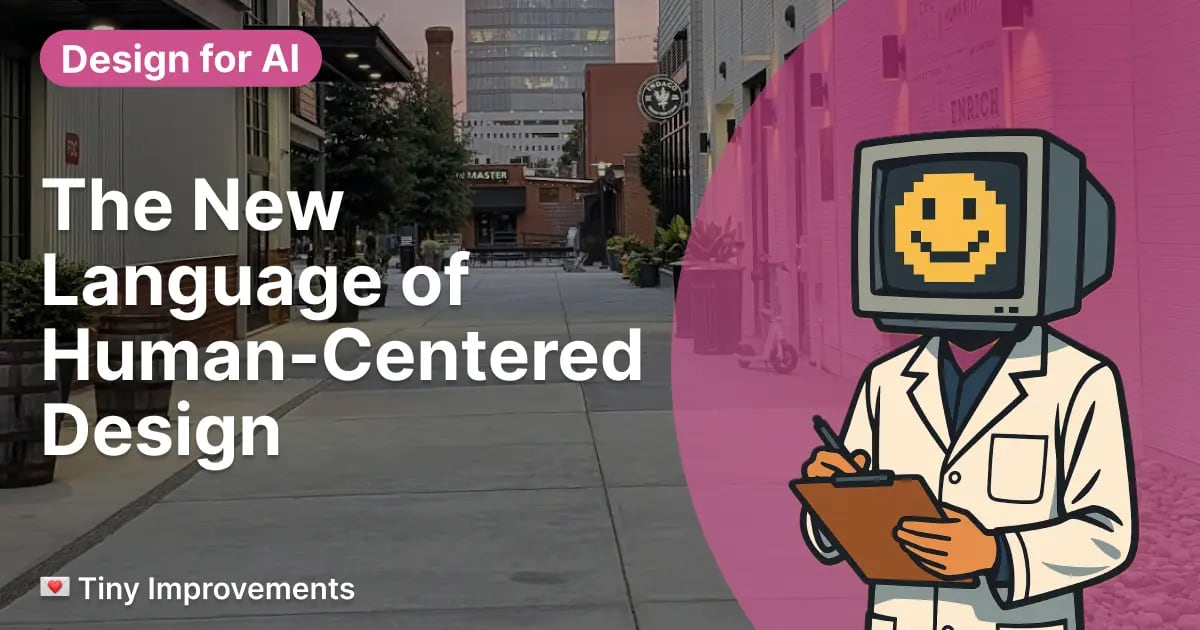
The Big Idea
Software has always required people to think like a computer. AI flips it on its head: people expect computers to work the way they think.
That shift sounds subtle, but it’s massive. It changes what “human-centered design” really means.
From Rules to Recall
Traditional software is deterministic: repeatable, predictable, safe. AI is different. It’s non-deterministic - send the same input to your favorite LLM twice, and you'll get different results.
Responses vary: sometimes it feels human, sometimes it feels flat wrong.
That unpredictability makes trust fragile. But it also makes experiences feel alive -- and perhaps counterintuitively, more trustworthy.
Memory changes everything
Think about how different this is from your experience with traditional software: LLM-powered apps let you have a custom, differentiated experience every time you use them. Your chat session today is shaped by your previous conversations.
Made an update to your profile? AI can suggest how to automate or change your work next based on your new information.
Suddenly, Gmail and Google Docs know about each other, and can suggest helpful actions based on your work across both.
Screens don’t sit still anymore. They grow, adapt, and remember.
Hybrid Intelligence
People who use software to get complex work done have traditionally needed to build mastery of their tools through repetition. There are countless tutorials on how to use Photoshop to do hyper-specific tasks, because Photoshop is an app that has an incredibly broad set of features, a steep learning curve, and requires deliberate practice to master.
The curve was steep, but the payoff was control and precision.
In a world where AI is the interface, that mastery is far less important.
Now, new users can pull up photoshop with literally no idea of how to accomplish their goal, other than to describe the outcome. That's enough for an agent to take a swing at the task, and often get it right. When it doesn't, the user can course-correct with more natural language.
That's pretty wild - and about as far from the goals of "traditional" UX as you can get.
For novices, it's liberating, but it means AI holds more knowledge of your past than you do.
UX’s New Job
Design used to be about helping people find the right button. UX Practitioners labor endlessly over trying to make your next step obvious.
I think that's going to fundamentally change.
For AI-powered work, design work needs to focus primarily on::
- Getting work done confidently
- Validating results users may not fully understand
- Making like the system feel like a partner, not a puzzle
Human-centered design has to evolve.
What’s next?
Autocomplete is already table stakes. Some apps already feel old without it. However, thoughtlessly slapping an AI layer onto a tired interface is worse - it feels cheap.
Here's where I think we're headed:
Conversational interfaces that actually work will be the norm for most workflows. Multimodal (voice + typing + camera) input will become far more common.
Work will regularly involve conversation and collaboration with multiple agents, fine tuned to perform specific tasks in concert with one-another.
User Interfaces will evolve beyond chat-with-an-llm-flavored UX: agents building compact, atomic, and situational UIs on the fly. For example: Want to update your bio? Here's a tiny form with just what you need - nothing superfluous or distracting.
When that happens, we’ll need something like a UX-lint for AI-built experiences. Guardrails for design itself, so that AI-generated UIs look consistent, feel familiar, and don't break the fundamental rules of usability.
What it means for Product Builders
👉 I’m not certain where this ends up, But I do know this: the products that win will be the ones that anticipate this new language of human-centered design, where AI, memory, and trust define the experience.

